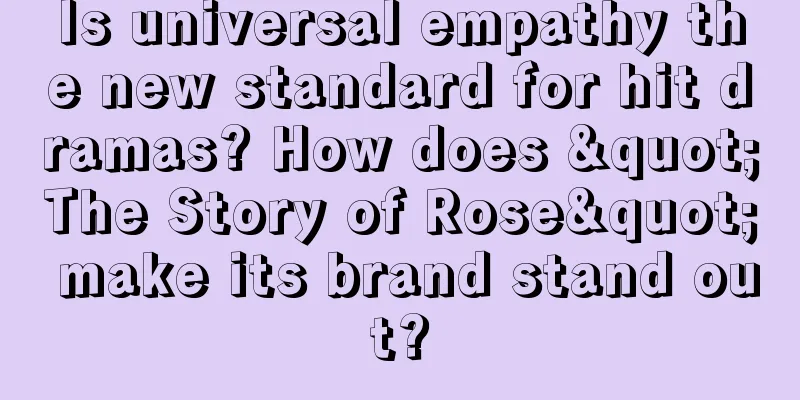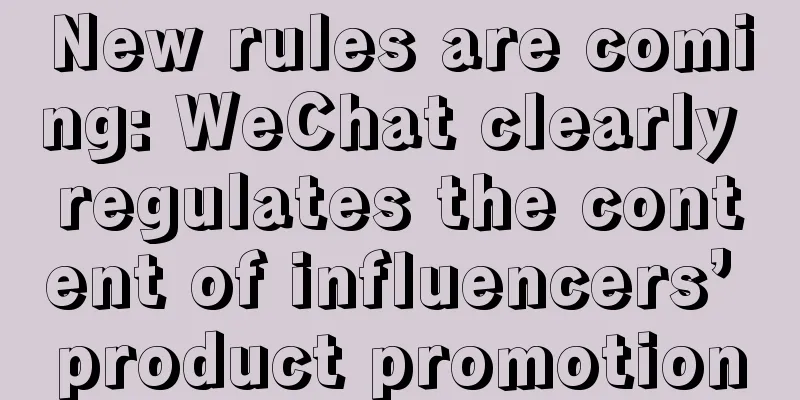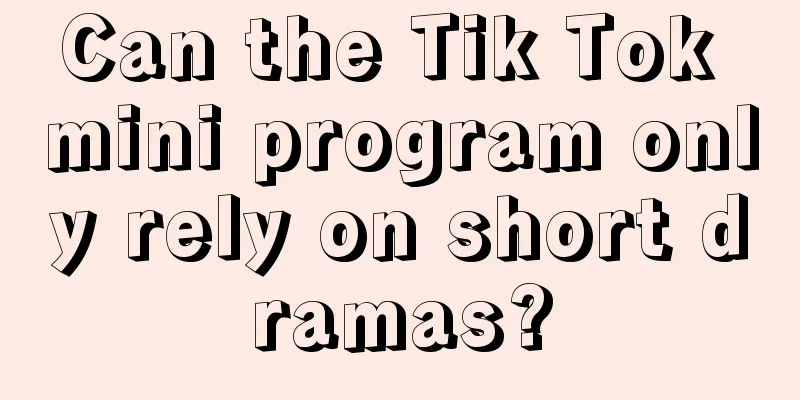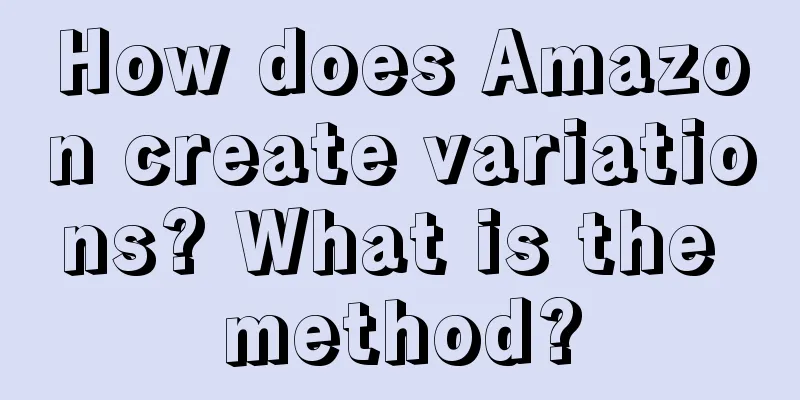Story economics, let your marketing touch people's hearts
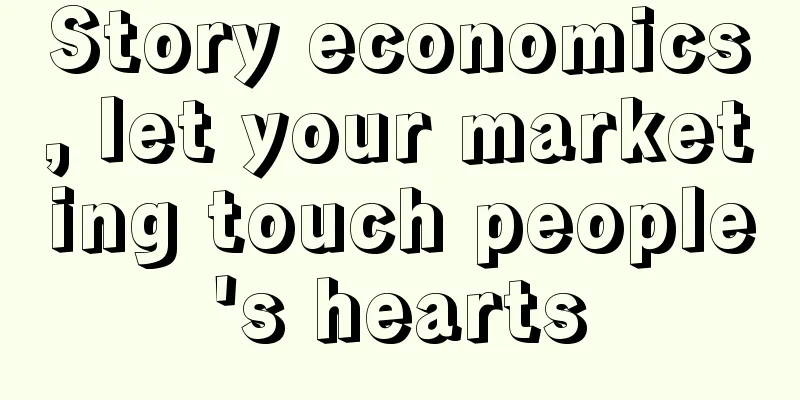
The swing under the shade of trees in summer, the kite with a broken string in the blue sky in autumn, the overlapping footprints on the snow in winter, and the long black hair fluttering in the breeze in spring may all be the beginning of a long period of time. In the story, we feel the plot, experience the emotions, encounter our own unknown expectations, and also discover life experience, which is knowledge. This kind of understanding that "can only be understood but not expressed in words" is the reason why stories are widely circulated among humans - people always call what they have understood experience, and the default setting for ignoring the advice of others is. So, if you’re trying to convince them but can’t find the right way – try telling a story first. There are two authors of this book, both of whom are worth introducing. Robert McKee: Born on January 30, 1941 in Detroit, USA, playwright and screenwriting coach. Known as the "Godfather of Screenwriting". He is the author of "Story: Material, Structure, Style and the Principles of Screenwriting" and "Dialogue: The Art of Language Performance in Words, Stage and Screen". Friends who are interested can look for them and buy them to read. Thomas Gerace: Born on December 21, 1970 in Pittsburgh, USA, he is a content marketing expert and one of the first senior analysts to study the Internet at Harvard Business School. In 2010, he founded Skyword, a content marketing company. At the time of establishing the content marketing company, we are far ahead of our domestic counterparts. For domestic advertising and marketing practitioners, perhaps influenced by the Internet, things transmitted from abroad have become very utilitarian. For example, "Growth Hacker" has become a fission flow in China, which is not appropriate in the long run. Next, let’s continue to learn about the content of this book. Key points: This book has a compact structure and is written based on "problem discovery, problem solution, solution execution, and future prediction". Next, I will explain the key points in the author's logical order. 1. The crisis of contemporary marketingA major focus of marketing is advertising, and advertising is a means. The initial marketing started with newspaper advertisements, and then inserted advertisements in articles that could attract the most readers' attention, and later pre-video advertisements and mid-video advertisements, all of which interrupted consumers' thoughts and forcibly implanted brand information into consumers' minds. In the early 19th century, publishers began to print local manufacturer advertisements in their newspapers in order to use advertising revenue to offset the cost of ink and paper. At the end of the 19th century, the emergence of railways meant that manufacturers' markets were no longer limited to local areas, and print advertising expanded from regional to national levels. With the advent of radio in the early 20th century, early broadcasters became the first media to be supported entirely by advertising revenue. In the 1940s, commercial television introduced the interstitial advertising method of radio broadcasts and quickly took over the field of media consumption. For the next 60 years, television advertising was the primary way American audiences learned about new products. In the 1980s and early 1990s, the development of cable television and the Internet greatly dispersed the audience, and advertising rates for television programs were forced to begin to decline. In 2006, the introduction of new technologies gave consumers the ability to reject advertisements - paid on-demand video services with no advertisements began to appear. When this approach became popular among consumers, media companies turned their attention to online video sites. In 2013, the cost of targeted online video advertising exceeded that of television advertising. In 2016, the global marketing advertising budget reached 605 billion US dollars. Budgets continued to tilt toward Facebook and YouTube, with digital advertising spending surpassing TV for the first time. However, the crisis of contemporary marketing has begun to emerge. When you find an advertisement in an article you are reading halfway, you quickly skip it; you install ad blocking software on your computer to avoid boring advertising promotions; when watching videos on APP, you skip the ads if you can click "skip", but if you can't, you buy a membership in exchange for the privilege of not watching ads... Ignoring ads, blocking ads, is this almost a daily routine for consumers? As we can see, advertising is becoming increasingly difficult. This crisis makes every marketer bald, and it troubles countless companies that need to promote their brands and market their products. This is not just a matter of change in communication methods. From simple paper media placement to the gradual decline of traditional media, the advertising placement methods of television and new Internet media have increased the diversification of distribution channels, but more and more advertising blind spots and advertising blocking have emerged. Consumers are becoming increasingly impatient and wary of advertising. They don't want to hear companies' statements and self-promotion, and are even wary and nervous about exaggerated and self-boasting advertising slogans. 1. Consumers hate advertising itselfPaid ad-free services are becoming more and more popular among consumers, who are willing to pay a certain membership fee in exchange for ad-free services as members of video websites. In 2007, after the widespread use of broadband, we often saw the popular company Netflix begin to test streaming media services. Users really like the paid membership model they offer that allows them to watch no ads. In 2016, Netflix had more than 93.8 million paying users. The massive subscription revenue provided it with a powerful competitive weapon. It began to learn from another giant, HBO, to invest in original series such as "House of Cards", and gained a number of fanatical brand fans. At the same time, scientific research shows that consumers' bodies have an instinctive resistance to advertising - a phenomenon called "ad blindness", which means that consumers will automatically ignore advertisements when browsing the web. It is worth noting that the number of users of ad blocking software is also increasing year by year. For three centuries, most companies have relied on advertising as the primary means of connecting with consumers, but suddenly they find that they can no longer deliver information to consumers. This is an unprecedented marketing crisis today, and marketers must find new ways to connect with consumers. 2. Long-standing deceptive advertising has distorted consumers’ distrust of marketing languageConsumers' quality of life is evolving, and their tastes, ability to question, ability to fight back and influence are also rising. The excessive abuse of rhetoric and opinion-generating marketing language has caused consumers to develop antibodies. Scientists have also confirmed in experiments that distrust of marketing rhetoric is deeply rooted in consumers’ hearts, distorting our perception of products and even making us doubt our first-hand experience. The author points to a case that confirms consumers' suspicion of marketing. In an experiment on potential audio buyers, Professor Ariely compared the different responses of two groups of audio enthusiasts to the same audio system. Professor Dan Ariely studies psychology and behavioral economics at Duke University's Fuqua School of Business. Participants in both experiments read the same review report. One group of subjects was told that the review was provided by the manufacturer, while the other group was told that the review came from Consumer Reports. Participants listened to Bach's works for half an hour, and then evaluated the sound system and were asked several key questions: Is the bass powerful? Are the high notes clear and bright? Is the speaker easy to operate? Is the sound distorted? The final question is, how much are they willing to spend on this audio equipment? The results showed that the subjects who believed they were reading objective information provided by Consumer Reports were more favorable to the audio system and were willing to spend an average of $407 to purchase the system; while the subjects who believed they were reading the manufacturer's manual were only willing to spend an average of $282. This proves that consumers are naturally wary and nervous about companies’ own statements and self-promotion, and even about self-promotion itself. This psychological state does not necessarily mean a marketing disaster, but rather brings about a massive marketing revolution. How to attract consumers? How to get consumers to patiently watch an advertisement? ——That depends on whether your advertisement can tell a good story. 2. Solution: Storytelling MarketingWe need to first understand why stories save marketing. It tells the story of the changes in human thinking, starting from the initial awareness of "I am" and ending with the way of thinking centered on "story". This change is traceable and proves the extent to which modern people accept stories. Scene 1: The First Human Thought "I Am"The first thought that emerged in the brain during evolution was "I am", which can also be called self-awareness, but the price is the awareness of the lonely nature of life, the distance from other lives, and even the distance from all human beings. Act 2: The Second Awakening of Mankind: “Time” and “Fear”Soon after the birth of self-consciousness, the consciousness of time flooded into the mind, and fear followed. Act 3: Story Thinking Storytelling thinking interprets an event based on core values. The impact of dynamic events on our lives is not singular, but rather challenges our values in the form of positive and negative binary oppositions. Values breathe life into stories. Humans, through eight driving forces: self-awareness, awareness of others, memory, wisdom, imagination, insight, connection, and self-expression, transform reality into stories in their minds to summarize and share experiences with others. What is the story? A dynamic, conflict-driven series of events that triggers meaningful changes in the characters' lives. Humans can draw life experience from stories and apply it to real life, so people instinctively like stories. This is why stories are the most suitable learning tools for the human mind. Therefore, stories can serve as an entry point and become an effective marketing tool. It is well known that a good story can attract the audience's attention, whet their appetite, achieve fame, and produce a meaningful emotional experience. Some of those wonderful advertisements are inspiring, while others are tear-jerking, but no matter what, they all achieve the purpose of using stories to convey corporate ideas. A good story can inspire the audience's sense of identification and desire to buy, and a story full of human insights can achieve the purpose of conveying brand value and establish a close connection between the company and the audience. Storytelling communication is the most advantageous way to convey information, because humans have been understanding reality by transforming it into stories since ancient times. In the days of campfire entertainment, people performed action epics about hunting, fighting, and surviving dangers; legends of magical powers that control nature; and myths of immortality in the afterlife. Today, bigwigs are using the power of stories to implement a successful business strategy. If a company has a strong origin story and the core values of the story are consistent with the brand, then it will become the first story that the brand is remembered by consumers. So what is a story? To give an accurate definition of a story : All stories are narratives, but not all narratives are stories. Stories are not processes, stories are not hierarchies, stories are not chronicles, stories are not passive accounts, and stories are not simple narratives. Stories are full of value and progressive. The story is structured as a dynamic, progressive series of events driven by conflict, which brings about meaningful changes in the lives of the characters. For example, in comics, we often see origin stories that explain how a superhero acquired his magical powers and where his strong desire for justice comes from. And companies known for innovation that want to build successful brands often have a successful origin story that stems from their founders. For example, the story of Apple began in 1976 when Steve Jobs and Steve Wozniak were eager to build a home computer in their garage. Today's Silicon Valley has a series of origin stories with garages as milestones. Companies such as Apple, Google and HP were all born in garages, and the story of garage genius is as old as Edison. These stories feature iconic American business heroes, telling the story of a young entrepreneur building a business from scratch and battling short-sighted prejudices and impossible odds. The eight stages of design storytellingA good and complete story is well-organized. No matter how the story changes, successful stories always have the same core skeleton that fixes the flesh and blood of the story, and it will not change after the baptism of time. I will briefly summarize the author's content: 1. Target audience - meaningful emotional appeal Before telling a story or creating something, we must first figure out who our target audience is and what impact our work will have on their thoughts and emotions. 2. Theme (background setting) - balance Including social background, main characters and core values, how we express the values of the company or brand in our creations. The core value will reflect the meaning of the story, often showing up as the two ends of the changes in the main events: love/hate, loyalty/betrayal, life/death, morality/immorality, hope/despair, justice/injustice... 3. Inciting Incident (Trigger) – Imbalance An event that disrupts the balance of the core character's life and thus opens the curtain on the entire story. 4. Object of Desire – Unmet Needs The core character's goal is to find the focus of life. (Including internal goals and external goals. Internal goals are the internal pursuit of the story, such as proving that justice will surely defeat evil, etc.; external goals are the goals that the protagonist decides for himself, such as getting a sum of money, etc.) 5. First Action - Strategy Selection The central character begins to take action, but the first action here refers to the first action that receives positive feedback and at least appears to be moving toward the object of desire. 6. The first feedback: Contradicting expectations Negative feedback events suddenly shatter the expectations of core individuals. 7. Choices in crisis - insight At this time, the core character is in a greater crisis. Not only has he failed to obtain the object of his desire, but he is about to lose it. He learns from the first feedback, regroups with insight, and takes the second action. But the second action will be more difficult and riskier than the first, and the protagonist will often have to go all out. 8. Climax Feedback – Achievement The central character's second action triggers a climactic response that satisfies the audience's expectations, causing the protagonist to gain or lose the object of desire. This event also brought his life back into balance. That is, when the story ends, the internal goal must be achieved, and it doesn’t matter whether the external goal is achieved. Characteristics of the story: The core pulse of all stories is one or more binary opposing values. The causal dynamics of the story explain why and how the climax full of affection and emotion happens. What is storytelling marketing? Storytelling marketing is about creating purpose-oriented stories so that the audience will make a purchase after reading the stories, thus achieving marketing goals. Stories can be divided into long and short stories. They all require progressive actions or feedback. However, when marketing, short and compact stories are needed. What is needed in marketing are purpose-oriented stories. It is worth noting that a guiding story does not have to be a complete story in form. It can be in any form such as pictures, photos, graphics, videos, etc. Since stories have a purpose, what is the difference between ordinary fictional stories and purpose-driven stories? After all, marketers don't want to turn themselves into novelists. 1. Long and short stories: Purposeful stories usually condense events and are not written into a novel or TV series. 2. Fuzzy memory and detailed memory: Purposeful stories require the audience to clearly remember details about the brand or product. 3. Satisfaction and Action: Ordinary stories end with an ending that satisfies the audience. Purposeful stories must go a step further and end up motivating the audience to take action. 4. Single experience and repeated experience: Ordinary stories give audiences a one-time experience, while purposeful stories give audiences an experience that will be repeated every time they buy a product or service, thereby motivating them to make repeated full-price purchases. 5. Author loyalty and brand loyalty: The audience's loyalty to an ordinary story is often to the author himself. And loyalty to purposeful stories should be to the brand, not the people behind the creation. 6. Purposeful stories create mirroring experiences: That is, ordinary stories will make the audience identify with the protagonist, stand on the side of the protagonist and support his decisions and his actions, but it is just understanding and support, unless we can really buy into this person, but after all, this is not a fan club. Purposeful stories create a sense of mirroring that “it turns out this problem can be solved this way,” allowing the audience to put themselves in the situation and re-interpret their own real-life stories using the solutions provided by the brand (such as purchasing products or services). Different details of the eight stages of a design-oriented story Good works often cleverly apply these eight stages to arrange the stories they want to tell. In a purpose-oriented story, what exactly do the eight stages do? 1. Identify three goals and create emotional appeal Research target audiences; identify needs, wants, and problems; design targeted actions. In this era of big data, apply STP theory to collect demographic information of the target market (including age, gender, education, income, etc. of consumers, customers or investors). These are what big data can tell us - "what this person looks like on the surface." Questionnaires that directly address the target audience’s inner thoughts can help us discover the real pain points in users’ hearts. What are their pain points? What needs do they have that they are not yet aware of? What hidden problems are the key to solving? The biggest difference between purposeful stories and ordinary stories is that their purpose is not just to satisfy the audience. If you just read a wonderful story and forget about it after reading it, this marketing story is ultimately insignificant. No matter how popular it is, it is just self-entertainment. Marketers should set clear target actions at this step - that is, what actions do they want the target audience to take after reading the story? Buy product? Experience service? register? download? Pay? 2. Decide on the theme of your story Discover core values; choose a protagonist; create a setting. Identifying unmet consumer needs in the first phase leads to the first step of the second phase: satisfying pain points and finding the core value that can best dramatize the solution. In terms of the choice of story protagonists, purpose-oriented stories in the last century often used personified corporate images, corporate products, and users (customers) as story protagonists. In modern times, almost all types of companies are portrayed as service providers, and consumer-centric stories have brought about a revolution in the global business world. Setting helps the creator to limit the scope of the story: the story's physical and social setting makes it so that only certain things can happen in this particular world. The time and place where the story takes place should take into account the familiarity and closeness of the target audience. If the situation where the pain point is located can be restored, then one step closer to achieving the goal. 1. Time: Position in time: present, history, future Span of time in a fantasy world: the time experienced by the characters in the story 2. Space:
3. Set up the triggering event Life begins with balance: the protagonist in the story is in a state of balance before the story happens, until something breaks it... Only when an event that disrupts the balance occurs can the protagonist's reaction to it have the potential to arouse the audience's resonance and concern. The Inciting Incident is responsible for tipping the balance and lifting the curtain on the story. Starting with the Inciting Incident, the Core Values swing between the two extremes as the story progresses. Its task is to quickly capture the audience's curiosity and raise a question in his mind - what will happen in the end? It has to grab attention, raise the most dramatic questions, create suspense, and provide the necessary scenes. 4. Set the object of desire The goal is to focus on the audience's curiosity and empathy as the story approaches its climax. For purpose stories, the object of desire can be a specific product or a specific situation that improves life. For example, promotion, salary increase, successful academic advancement, etc. It can also be something more abstract, such as a journey that takes place in a fairy tale world, which looks more beautiful. But the desire must be unique. It is worth noting that the object of desire should be relevant to the value so that the audience can feel a sense of consistency. The greater the risk, the higher the value of the object of desire. The core value of the story must correspond to the core value of the company or brand, and they can echo, progress, or extend each other. This is how you bring the story together with the business that created it. 5. First Action The protagonist's intentional or unintentional language or strategies try to evoke positive feedback from the world. The creator of a purposeful story must conduct a careful and in-depth study of the psychology of the protagonist. What does he want to happen? What would he consider doing for this? Use your understanding of the potential audience to infer the possible behavior of the protagonist. 6. The first feedback, contrary to expectations, against the power Developments that go against the protagonist's expectations occur, and unexpected feedback also gives him a new understanding of his world. That is, opposing forces, including physical, social, personal, and internal obstacles. Unexpected failure will trigger people's desire to fight back against denial and rejection, and the protagonist's task is to begin to clearly realize that there are new solutions to the problem in this accident. Stories show us how and why life changes 7. Crisis decision, insight As the story reaches a critical moment, the protagonist's insights in the sixth stage will clearly indicate the path to the object of desire. Faced with failed experiences and new ideas that have not yet been tried, the protagonist may have been stuck in a stalemate. But at this time, there may be other external or internal stimuli that prompt him to make the decision to take the second action. The essence of choice: always choose the right, beneficial, and good choice 8. Climax Feedback This phase is responsible for fulfilling commitments. It satisfies the audience’s curiosity about the outcome of the story, while also dramatically making them aware of how to solve the mirror problem in life—how to satisfy their own desires. The protagonist's second action evokes positive feedback from the world, allowing him to obtain the object of desire, gain satisfaction, and restore balance to his life. The audience then realized the solution to the problem from his second action: “You can also do this” and “I can also do this”. The author of the story should understand that the goals determined in the first stage should be buried therein, and in cases with multiple turning points, the story gradually moves towards the climax and the satisfaction of the characters' needs. If we combine the above content, we can simplify it further, because in real life, many advertisements do not tell the story of the eight stages in full. First: Identify the target audience and create emotional appeal We need to determine which group we are targeting and explore the consumers’ deepest needs and find their pain points. Jobs found that Dell's products were poorly packaged, bulky, and very inconvenient to carry, and the streets were filled with equally bulky machines. He sensed something that consumers subconsciously wanted but hadn’t discovered: a unique identity. So he created a series of beautiful, elegant and unique Apple products, and continued to turn the company's blueprint into stories, promoting it through a series of advertisements, leaving behind a good story of brand marketing. 2. Establish the plot for the story It is necessary to create a balanced and stable initial background state, and then create conflict to break the imbalance and push the protagonist to take action. The protagonist takes action motivated by some desire, but unexpectedly receives feedback that is the opposite of what he expected. In the three-minute film "Dove's True Beauty Sketches" designed by Ogilvy for Dove, the heroines described their own appearances around the core values of self-criticism and self-appreciation. The FBI formed a portrait based on this and then compared it with the results of the painter's direct painting. In this process, the opposite results of the world's feedback and one's own feedback reinforce the value of self-appreciation. At the end of the story, the protagonist made a second choice and had a few seconds of "enlightenment moment" at the climax. The audience suddenly understood the ins and outs of the matter, and all problems were solved. Neuroscientists have shown that people can strengthen their memories during moments of enlightenment. Therefore, advertising marketers usually emphasize the brand and trademark in these few seconds, turning the entire story into a powerful call to action, calling on the audience to replicate the protagonist's success in the real world. A guiding story usually cannot be too long, but often even a simple slogan can make people think of the complete story and achieve the same effect. For example, when people see Nike's slogan "Just do it'", the following story may come to mind: One day I was climbing the stairs and it took me a lot of effort to get upstairs (protagonist and background) - then I realized that I should start exercising (inciting incident) - otherwise one day I would not be able to climb up (desire: health) - so I bought a pair of Nike shoes and started running (first action) - losing weight was very difficult and tiring (feedback) - but I persisted (second action) - finally lost weight successfully (climax) Under the influence of story thinking, people accepted the call to buy Nike. The extraordinary thing about storytelling marketing is that it extends from the protagonist’s actions in the story to one’s own choices, stimulating one’s sense of identity and desire to buy, thus achieving the success of storytelling marketing. We can even intuitively find out from the best and worst online ad rankings that the ads at the bottom are all old-fashioned boastful ads, while those at the top are all wonderful storytelling ads. In addition, storytelling advertisements related to corporate values have always achieved good publicity effects in marketing activities. If brands do their homework and truly understand their audience, they can create great stories that disrupt the market. Marketers for Ariel, an Indian laundry detergent brand, found that the division of labor between men and women in the family is very unequal, with 70% of men believing that women should be responsible for doing laundry, which adds a heavy household burden to women. So they created the "Sharing the Burden" ad, in which the daughter serves the family all day long, and when the father tells his daughter that he will help his wife share the burden, the story turns from negative to positive. The ad, about the different gender roles in the family in India, connected closely to the interests of Indian women, sparked a national conversation and drove Ariel's sales up 75%. There is also the Yi Er San advertisement that once sparked public debate online. It was precisely because it grasped the pain point of women's values on whether their appearance is important that it triggered a series of resonances and heated discussions. For example, this year more and more companies have openly proposed "Women's Day" instead of "Goddess Day" or "Queen's Day". At a time when consumers are increasingly dissatisfied with the forced definition of women imposed by consumerism, returning to the most authentic values has attracted people's attention and love. In storytelling marketing, people will extend their thoughts from the actions of the protagonist to their own choices, stimulating their own sense of identity and desire to buy, thus achieving the success of storytelling advertising. Almost all creative agencies today are working towards storytelling marketing, shifting from advertising-driven to content-driven, with creativity as the core, which has been proven to be effective by the market. 3. Specific actions to make stories effective1. Story marketing strategy must have a defenderChief Marketing Officers (CMOs) are the right people to be the agents of change and influence attitudes towards storytelling within their teams. 2. Define your brand with a story“The brands we choose reflect how we see ourselves, or how we want the world to see us.” A great brand story can find the parts that can arouse empathy and resonance from the brand’s origin, history, mission, products and consumer stories. By defining the brand in this way, consumers will have feelings such as "this brand improves the quality of my life", "this brand reveals my excellent taste", and "this brand is liked by people with attitude". 3. Tell a story about your adsAdvertisements should avoid straightforward boasting, self-aggrandizement, and dry, emotionless statements. Instead, they should adopt a story structure that moves people. For example, if you have to place an ad in a feature film video, you should choose a story-telling ad. In fact, this is the approach used in current popular drama video ads. Because inserting traditional advertising into a story is a disruption to the audience, but inserting another story into a story is different. 4. User research and content marketing1. User research New discoveries about search engines and social media are giving CMOs new ways to reach consumers and maintain long-term relationships with them. In direct communication with users, brands can discover where their users’ first impression of them comes from – the brand logo? product? slogan? Close connections with users can give brands more insights into what they love and apply them to their own content marketing. 2. The Marketing Continuum Content marketing is not about repeating the advantages of your brand or the performance of your products, but about creating materials that consumers want or need. In the book, the author believes that companies should adopt content marketing in all aspects of their production and operations, and use the degree of storytelling of a company's marketing content as an indicator to measure the company's level in the story economy. We can divide them into five levels according to the weight of corporate content marketing:
The latter two are framed by the author as the category of "story economics". At present, content marketing in China is generally very good, but it is more centered on social media itself. 3. Ways to gain audience Organic reach: Search for sharing by acquaintances on social media Influencer marketing (KOL) with celebrity endorsements Influence from user-generated content (UGC) Personalized recommendation features Paid promotion 4. Storytelling Sales No one will take an action unless he or she consciously or unconsciously feels that the action he or she has chosen is the best decision, or the only decision. In fact, there are The sales strategies of many brands are backward. It is recommended to use the eight design steps of purpose-based stories to design the content of sales conversations and conduct more targeted exploration based on the differences between marketing and sales. (1) Objectives Conduct market research first by using telephone interviews or emails (H5, online and offline questionnaires, etc.) to identify target audiences, target needs, and target actions. When you discover the user's pain points and use a story with an upbeat ending to tell them how to solve their problems, the sale is made. (2) Theme After knowing the goal, designing a sales purpose-oriented story requires building the theme framework of the story through three steps: determining the core value, determining the protagonist, and determining the background. As for purpose-oriented stories, the topics discussed in the entire story almost only revolve around the binary value of "success/failure", such as innovation/imitation, efficiency/ineffectiveness, risk/safety, leader/follower... The protagonist of the story and the background surrounding the protagonist depend on the information you know about the potential customer. (3) Inciting event Negative motivational events can cause users’ lives to become unbalanced. People who lose balance are usually more willing to take risks to regain their balance or even reverse the downward trend (which means they are more likely to accept the new products you intend to sell). Positive motivational events can also trigger a series of challenging events, so people who experience positive motivational events will also have the need to define a new balance. Therefore, based on the potential user information learned in the first two stages, you can prioritize the users:
(4) Object of Desire What problems does the protagonist face? How did this problem change his originally peaceful life? (What impact will the Inciting Incident have?) If he wants to regain his balance, what kind of thing (new product) does he think will help him get back on track? This is the object of desire you need to construct for your protagonist in your story. (5) First Action Analyze and speculate, and based on the information you have collected, first study the measures or products that users may have tried, and the reasons why these measures or products did not work. Build your story solution (and implant the product) based on this information, and avoid recommending to users methods that they have already tried and failed, which will be very embarrassing for your product. (6) First feedback Deeply analyze the information you obtained or inferred in the previous stage - what caused the solution or product that the user tried previously to fail? And what is the status of failure? What are the negative impacts and consequences it brings? (7) Second Action With the information accumulated in the above stages, you can clearly string together a story line in which a potential user faces an imbalance caused by an incentive event, takes action, and fails. The rest of the story will be anchored by your product - your story should show the user in a compelling way that you understand his experience, and then point out how your product or service will help him overcome his challenges and achieve success. (8) Climax Feedback When you have the opportunity to talk to potential users face to face, you can retell a similar story, telling a story about a customer facing a similar problem in colloquial language, so that the potential user in front of you realizes that as long as he makes a purchasing decision, the problem that is bothering him will be solved. 4. Important steps in building brand story economics – results trackingThe author suggests that in order for a brand to establish a positive cycle and smoothly operating story marketing gene, it is necessary to track the results of the storytelling marketing you do. The author suggests that we evaluate and provide feedback on our story marketing from the brand, content, market and sales sides through indicators such as profit growth, communication coverage data, user conversion rate, and sales conversion rate. 4. Final ThoughtsMore and more people are sharing their favorite stories, and stories that resonate with people will attract more attention and exposure. Story-driven marketers will spend their budget on creating stories and spend an increasingly smaller share on delivery channels. This is the inevitable transition from advertising-driven to story-driven. In particular, the innovation and maturity of new technologies such as VR (virtual reality) and AR (augmented reality) have brought unprecedented enhancement of audience experience. Technology has made stories more important, which will further stimulate the development of storytelling. Brand storytelling will not only become a powerful driver of commercial returns, but will also bring unprecedented opportunities to marketers. Wealth planning companies like Blackstone Group insert advertisements during CNBC's "Financial Forum" program to promote their brands. If Blackstone produced a high-quality video program that featured compelling business news stories, it would not have to interrupt consumers with blunt ads but could integrate its products into the program. Today, drivers might listen to a podcast while stuck in traffic, but in the future, as self-driving cars whiz along on the most efficient routes, drivers might tune in to their favorite web series or branded stories. Reality-altering devices sold by Samsung Gear, HTC VIVE and PlayStation VR allow consumers to become the protagonists of virtual reality video games, and technology greatly enhances the audience experience of story events, further expanding market reach. The new new media will leap into the great transcendence of virtual reality and augmented reality. Marketers who successfully apply story economics will have extraordinary opportunities. There is no need to spend a lot of money on interstitial ads and brag about your products. Instead, you can use stories full of human insights to enrich the audience's lives and establish a close connection between the brand and the target audience. In the content marketing era of storytelling economy, great marketing strategies will all be nurtured from successful stories. Writing stories and spreading information through stories has always been our human instinct. What governs a good story is never the plot, but the nature and vision that resonate with people and that drives the plot. Just like God has written a unique life script for each person, you and I are in it, far apart but able to sympathize with each other. The same is true. Isn’t humanity itself a never-ending story? The essence of this book has been explained. I hope it will be inspiring to you. Author: Wang Bubai Source: WeChat public account "Bubai Power Account" |
<<: Data drives business, I summarized the whole process of standardization
Recommend
All in on short videos? After being rumored to be facing a "life and death test", Guanguang will be renamed "Taobao Video"
This article analyzes the development of Guanguan ...
Where and how to view Amazon's organic traffic?
Amazon merchants should pay attention to the store...
Tear open Xiaohongshu's home furnishing traffic, the reason behind the 10-fold growth
Xiaohongshu has become a marketing platform for ma...
How to promote Wish? What should I pay attention to when promoting?
As the world's leading mobile e-commerce platf...
Tencent, ByteDance, and Kuaishou are adding more investment. Who will lead the short drama race in the decisive year?
This year, the momentum of the short drama market ...
"Countdown to pick up money", this Spring Festival, the county town milk tea is making crazy money
First-tier brands are moving down to the lower-tie...
"Crazy Four Literature" can't beat "Mai Men"? Why did KFC lose its first-mover advantage?
In many people's Internet memories, KFC's ...
Which is harder to learn: accounting or cross-border e-commerce? What are the advantages and disadvantages of each?
In today's digital age, accounting and cross-b...
What is the Cargo Transportation Conditions Certificate? What is it used for?
If you want to transport goods by ship or plane, y...
How to sign up for Shopee's free shipping event? How to set up free shipping?
In order to get more orders on the Shopee platform...
A refreshing novel was adapted into a mini-program short drama: 100 episodes were shot in 3 days, and 13 million yuan was earned in 45 days
Now, more and more people are flocking to the tren...
The first Chinese luxury brand to succeed overseas may be a confinement center
Through precise insights and high-quality content,...
Among all the big IPs with a lot of advertisements, is "Joy of Life 2" the only one that is controversial?
The recently popular "Joy of Life 2" has...
Label your brand and break the dilemma of homogeneity!
The pace of the times is accelerating, and brand o...
Why can't I pay on delivery on Lazada? How can I solve this problem?
Lazada is a platform in Southeast Asia that Alibab...



